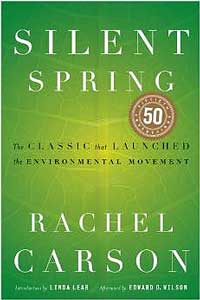 When I ask my students during our class on birds, Feathered Friends, what sort of effects chemicals, pesticides, and insecticides might have on an ecosystem, they immediately respond with negative answers. These words trigger reactions about bad chemicals that kill plants, poison animals, and contribute to general destruction of the environment.
When I ask my students during our class on birds, Feathered Friends, what sort of effects chemicals, pesticides, and insecticides might have on an ecosystem, they immediately respond with negative answers. These words trigger reactions about bad chemicals that kill plants, poison animals, and contribute to general destruction of the environment.
However, only fifty years ago the responses about chemicals would have been drastically different.
Before the 1960’s, chemicals used for pest control were abundant and thought to be overtly beneficial to humankind. They destroyed bugs, insects, and other unwanted plants and animals killing crops that humans needed to survive.
Today we know differently, that most pesticides are harmful and dangerous to animals, plants, humans, water, soil, and all biotic factors in our environment. All this knowledge is in great part thanks to Rachel Carson and her 1962 book, Silent Spring.
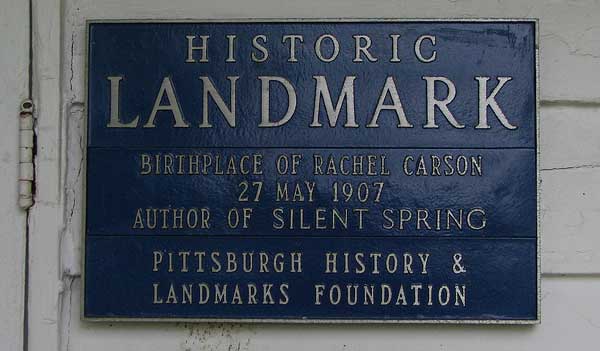 Though it was written over 50 years ago, Carson made a lasting impact on the environmental and conversation movements in ways that can still be felt today. Her book sparked such controversy that it eventually led to the ban on DDT (dichlorodiphenyltrichloroethane), one of the most dangerous chemicals, and to the creation of the Environmental Protection Agency.
Though it was written over 50 years ago, Carson made a lasting impact on the environmental and conversation movements in ways that can still be felt today. Her book sparked such controversy that it eventually led to the ban on DDT (dichlorodiphenyltrichloroethane), one of the most dangerous chemicals, and to the creation of the Environmental Protection Agency.
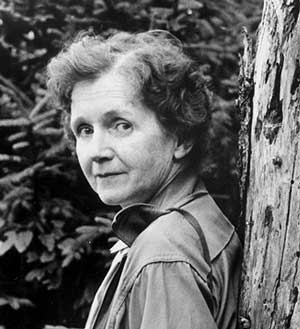 Carson, who was suffering from breast cancer in the four years she was researching Silent Spring, grew up on a farm in rural Pennsylvania and was a marine biologist who worked for the US Fish and Wildlife Service. Her unique perspective and love for nature allowed her to create a book intended not only to warn of the negative effects of pesticides, but also to detail the consequences human interference, in general, can have on nature.
Carson, who was suffering from breast cancer in the four years she was researching Silent Spring, grew up on a farm in rural Pennsylvania and was a marine biologist who worked for the US Fish and Wildlife Service. Her unique perspective and love for nature allowed her to create a book intended not only to warn of the negative effects of pesticides, but also to detail the consequences human interference, in general, can have on nature.
In the first few pages of the book, she suggests that insecticides and pesticides should be called “biocides,” for they are poisons that ultimately destroy all types of life, not just unwanted insects and “pests.” Although this book is most remembered for its passages on DDT, it is clear that Silent Spring has a goal, and that is to persuade the reader of the overall damaging effects humans can have on the environment, and ultimately on themselves.
Carson is persuasive and a commanding storyteller, but Silent Spring can be a dense, science and terminology heavy book at times, especially the chapters where she describes the chemical properties of different pesticides. Chapter 3, titled “Elixirs of Death” is especially scientific and for someone like me without a background in organic chemistry or even biology, it was hard to read at times.
 However, Carson utilizes statements so powerful and shocking that it was impossible to put down. Even the chapter titles shock the reader and work as an effective hook. Her narrative is story-like and does not read like a textbook. It is gripping and through her words she is able to paint a picture of a grim future.
However, Carson utilizes statements so powerful and shocking that it was impossible to put down. Even the chapter titles shock the reader and work as an effective hook. Her narrative is story-like and does not read like a textbook. It is gripping and through her words she is able to paint a picture of a grim future.
“a world where the enchanted forest of the fairy tales has become the poisonous forest in which an insect that chews a leaf or sucks the sap of a plant is doomed.”
The first chapter, “A Fable for Tomorrow,” chillingly describes a fictional American town that lies still and destroyed, ravaged by chemical pollution. It reads as alarmist at times, but when one considers the many examples and details of her stories, it is certainly warranted.
While Carson spends many chapters detailing the costs of using pesticides on water, soils, plants and other animals, it is the chapters on human consequences that leave the most lasting impression. Chapter 12, “The Human Price,” compares chlorinated hydrocarbons and their effects on the liver and other organs to ancient diseases like cholera.
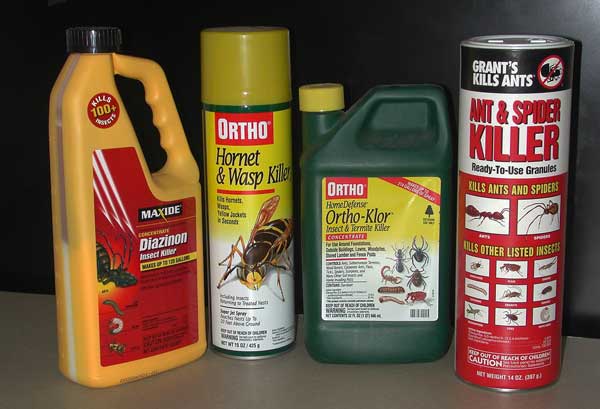 What is even more frightening about insecticides in the human body however, are their slow-moving and long term effects. Chapter 14 is an especially powerful one, where Carson talks about cancer and even refers to DDT as a “chemical carcinogen,” that has the ability to produce tumors. It is not until the last chapter of the book, “The Other Road,” where she suggests environmental and conservation solutions that will no longer attempt to control nature.
What is even more frightening about insecticides in the human body however, are their slow-moving and long term effects. Chapter 14 is an especially powerful one, where Carson talks about cancer and even refers to DDT as a “chemical carcinogen,” that has the ability to produce tumors. It is not until the last chapter of the book, “The Other Road,” where she suggests environmental and conservation solutions that will no longer attempt to control nature.
Knowing her background and the fact that she was suffering from breast cancer herself, there are chilling passages that evoke not only fear but also sadness for her and the future of humanity.
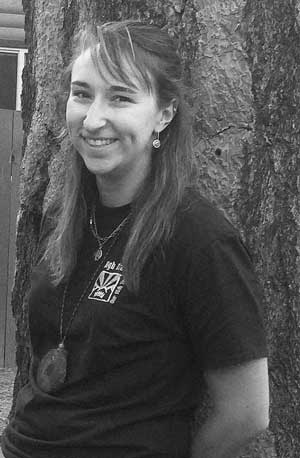 At High Trails, we teach about DDT and the destruction it caused in the class Feathered Friends, but the teachings of Carson can be applied to everything at High Trails. Our staff shirts have the statement “Learning how we can all fit together on one healthy planet,” and this is something we strive to teach every single day.
At High Trails, we teach about DDT and the destruction it caused in the class Feathered Friends, but the teachings of Carson can be applied to everything at High Trails. Our staff shirts have the statement “Learning how we can all fit together on one healthy planet,” and this is something we strive to teach every single day.
Without Rachel Carson and her book Silent Spring, many plants and animals, and even us humans, might not be able to enjoy this beautiful planet we share, so we should all strive to be as concerned, aware, and thoughtful as she was.
At High Trails Outdoor Science School, we literally force our instructors to write about elementary outdoor education, teaching outside, learning outside, our dirty classroom (the forest…gosh), environmental science, outdoor science, and all other tree hugging student and kid loving things that keep us engaged, passionate, driven, loving our job, digging our life, and spreading the word to anyone whose attention we can hold for long enough to actually make it through reading this entire sentence. Whew…. www.dirtyclassroom.com

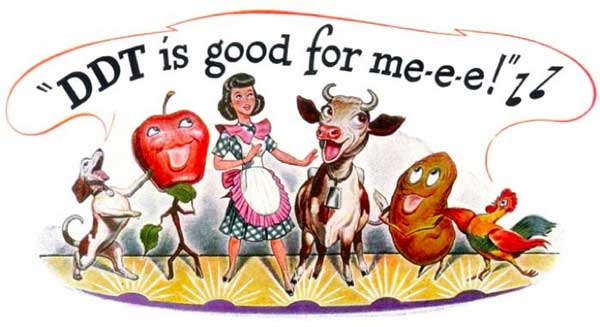
Comments are closed.